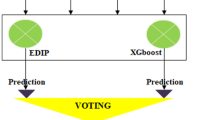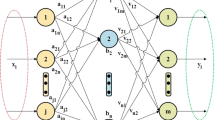Abstract
The applications of imbalanced datasets are very common in real life around the world, such as patients with rare disease, detection of mechanical abnormalities, etc. Those types of datasets require the better construction of a classification model in order to get better predictions of which group the data belongs to. Therefore, how the classification models been constructed and how to improve the accuracy of the imbalanced data is more and more crucial.
This paper uses Convex Hull and Hyperplane algorithms to improve the original prediction method, which based on the Location-based Nearest Neighbor (LBNN), proposed for one-class classification problems. With this prediction model, we found this method can also benefit for edge computing with limited CPU processing power and memory as the unclassified data can be judged if it belongs to target class on the edge node.
From our experimental result shows that the improved method has better performance in most imbalanced datasets. Besides, in terms of data storage we don’t need to keep historical data by retained only the model of calculation matrix, which can determine whether the unknown data belongs to the target class or not. This would significantly reduce the computing and storage effort.
Access this chapter
Tax calculation will be finalised at checkout
Purchases are for personal use only
Similar content being viewed by others
References
Khan, S.S., Ahmad, A.: Relationship between variants of one-class nearest neighbors and creating their accurate ensembles. IEEE Trans. Knowl. Data Eng. 30(9), 1796–1809 (2018)
Wun-Hui, Z.: The Study of Enhancement of One-Class Nearest Neighbor for Imbalanced Dataset. National Sun Yat-sen University, Taiwan (2021)
Padmaja, T.M., Dhulipalla, N., Bapi, R.S., Krishna, P.R.: Unbalanced data classification using extreme outlier elimination and sampling techniques for fraud detection. In: International Conference on Machine Learning and Cybernetics on Advanced Computing and Communications, pp. 511–516 (2007)
Su, C.-T., Chen, L.-S., Yih, Y.: Knowledge acquisition through information granulation for imbalanced data. Expert Syst. Appl. 31(3), 531–541 (2006)
Cohen, G., Hilario, M., Sax, H., Hugonnet, S., Geissbuhler, A.: Learning from imbalanced data in surveillance of nosocomial infection. Artif. Intell. Med. 37, 7–18 (2006)
Xie, Y., Lia, X., Ngai, E.W.T., Ying, W.: Customer churn prediction using improved balanced random forests. Expert Syst. Appl. 36, 5445–5449 (2009)
Wenzhu, S., Wenting, H., Zufeng, X., Jianping, C.: Overview of one-class classification. In: 2019 IEEE 4th International Conference on Signal and Image Processing, pp. 6–10 (2019)
Liu, F.T., Ting, K.M., Zhou, Z.: Isolation forest. In: 2008 Eighth IEEE International Conference on Data Mining, pp. 413–422 (2008)
Hoyle, D.C., Rattray, M.: PCA learning for sparse high-dimensional data. Europhys. Lett. 62(1), 117–123 (2003)
Author information
Authors and Affiliations
Corresponding author
Editor information
Editors and Affiliations
Rights and permissions
Copyright information
© 2022 The Author(s), under exclusive license to Springer Nature Singapore Pte Ltd.
About this paper
Cite this paper
Huang, CM., Hsu, MY., Hung, CS., Lin, CH.R., Chen, SH. (2022). The Enhancement of Classification of Imbalanced Dataset for Edge Computing. In: Hsieh, SY., Hung, LJ., Klasing, R., Lee, CW., Peng, SL. (eds) New Trends in Computer Technologies and Applications. ICS 2022. Communications in Computer and Information Science, vol 1723. Springer, Singapore. https://doi.org/10.1007/978-981-19-9582-8_19
Download citation
DOI: https://doi.org/10.1007/978-981-19-9582-8_19
Published:
Publisher Name: Springer, Singapore
Print ISBN: 978-981-19-9581-1
Online ISBN: 978-981-19-9582-8
eBook Packages: Computer ScienceComputer Science (R0)




